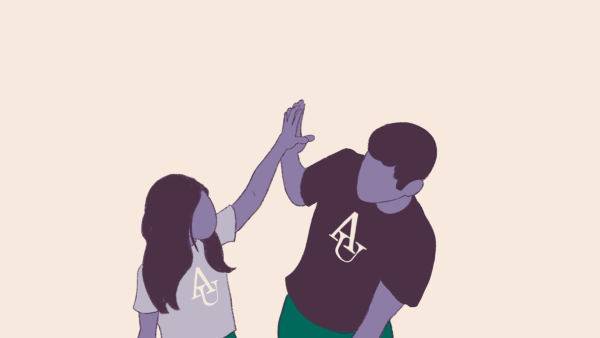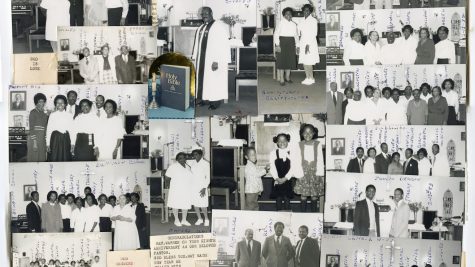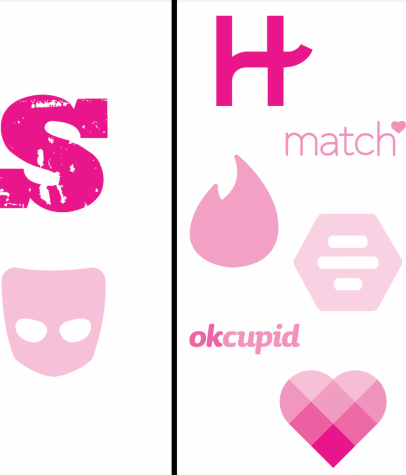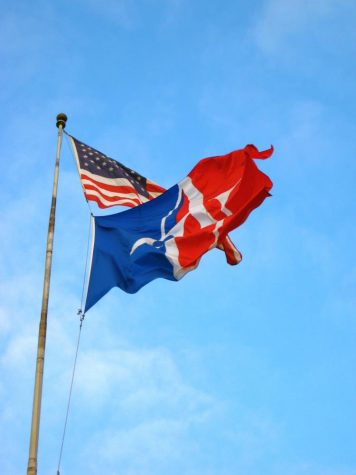Why is the Eagle So Hostile to Feminists?
Combine a female majority with AU’s reputation as a liberal enclave and a hotbed for radical activism, and one would not unreasonably expect to find an environment friendly to feminism. This seems to be true in nearly every aspect of campus culture: the Women’s Initiative is one of the most influential segments of the Student Government and sponsors frequent and popular events ranging from annual performances of The Vagina Monologues to sex education seminars, while other organizations like the Women and Politics Institute represent the university’s commitment to advancing the cause of gender equality. There remains, however, one glaring exception: The Eagle, AU’s most visible media representation of the university.
When an article in the Eagle announced Student Government approval for the creation of a Women’s Resource Center last November, the news was met with little fanfare. Though a major success for the Women’s Initiative, which had been lobbying since 2006 for a space in which to provide support and advocacy services for women on campus, the SG endorsement of the project seemed somewhat inevitable; after all, the comparable GLBTA Resource Center has been receiving university funding since 1999. Though the Eagle article was vague about the nature of the services the center would offer, it suggested that the WRC would pool existing resources for women, as well as create full-time staff positions in order to better provide counseling services to students, faculty and staff.
Also appearing in the November 1, 2009 issue of the paper, however, was a staff editorial that single-handedly generated a flurry of controversy about not only the Women’s Resource Center, but the state of feminist activism on campus. Titled “Questioning new resource centers,” the article suggested that the entire student body should not be responsible for funding services that only benefit “special subgroups.”
Representatives of the Women’s Initiative responded immediately in a published letter to the editor which emphasized that funding the WRC represents a commitment to social equality that should interest all AU students.
But while the Women’s Initiative response conveyed the finality of agreeing to disagree, The Eagle seemed eager to perpetuate the debate. On November 11, another article appeared, titled “Campus Debates Need for Women’s Center.” While the parties listed in favor of the WRC included sitting SG President Andy McCracken, previous AUSG administrations, and as one commenter noted, the Board of Trustees, the article quoted only two unaffiliated male undergrads as opponents.
Only a week later the controversy was stoked yet again by another inflammatory op-ed, this time by Eagle columnist Alex Knepper. A self-described “classical liberal,” Knepper became notorious in fall of 2009 for his conservative columns bemoaning various aspects of campus culture, especially those related to social justice organizations and leftist political movements. In an article tellingly titled “Feminist — err, Women’s Center Wastes Money,” Knepper decried the WRC as a front for feminist activism, arguing that the gender-based pay gap is a myth and that due to the female majority on campus, as well as the existing resources in place for sexual assault victims, there was no need to create a separate space for women.
Within days of its publication, Knepper’s column had garnered over 100 comments on the Eagle’s Web site, many of them from Knepper himself in response to members of the Women’s Initiative and other students expressing disapproval. Though it would be the last article in the Eagle specifically addressing the WRC, Knepper continued to make reference to the controversy and his disdain for the feminism in nearly all of his subsequent columns.
So how did seemingly unanimous approval of the WRC become a hot-button issue overnight?
In many ways, it never did: the controversy over the WRC was almost entirely manufactured by the Eagle. Though the staff editorial did generate heated debate in the comments section of the online edition, many of the comments the editorial garnered were attributed to Alex Knepper, most in response to other commenters questioning his and the Eagle’s negative response to the WRC. Often, these comments were not even directly related to the WRC, but rather veered into debates between Knepper and other commenters about the existence of “rape culture,” or whether or not women are entitled to paid maternity leave.
By the time the article by Sarah Parnass covering the “controversy” was published on November 11, a disagreement had certainly arisen, but it seemed to be almost exclusively between Knepper and the Women’s Initiative. His editorial column later that week seemed to be only further confirmation that the opposition was small, if not singular. By the end of the fall semester, discussion of the WRC had all but ceased in the Eagle, with the exception of occasional snarky references from Knepper.
The treatment of the Women’s Resource Center represents the latest in a disturbing trend toward antifeminist bias in the Eagle. Earlier in the semester, a sex advice column entitled “Sex-perimentation Defines Welcome Week” created a similar dust-up between Eagle staff and the Women’s Initiative over its treatment of rape. The story even garnered coverage on Washington City Paper’s Sexist blog. Columnist Amanda Hess expressed incredulity that “The Eagle chose to use a woman’s hazy, drunk, and painful sexual experience in order to illustrate the serious on-campus problem of . . . drunk women wanting boyfriends!” When their decision to run the “Sex-perimentation” column was called into question, Eagle staffers accused the Women’s Initiative of “crying wolf” over an imagined sexual scenario that, in their minds, did not illustrate lack of consent.
Their argument against the Women’s Resource Center was similarly weakly-worded. The staff editorial stated that while “all of AU’s male students will be paying into the same fund that will create and maintain this center … they won’t reap the same benefits as women will.” But presumably, many straight-identified students pay to fund the GLBTA Resource Center, just as able-bodied students’ tuition helps to fund the Disability Support Center. Would the Eagle oppose budget allotments for these services as well?
The likely answer is no, which says more about the Eagle’s espoused attitude toward feminists than its concern for how AU uses its funds. Their argument seems to rest on the idea that at a school where women are in the majority and resources already exist to address issues like sexual assault, there is no need for a center catering specifically to the needs of female students and staff.
But according to Sarah Brown, Director of the Women’s Initiative, the need for the WRC is urgent and well-founded, in part because it will provide for a professional advocate and counselor on women’s issues.
“Because sexual assault is such a problem on campus, in addition to other problems female students and faculty face, such as inadequate and expensive gynecological services, sexual harassment, and unfair hiring and tenuring practices, women on campus need a full-time advocate,” Brown said, noting that creating such a position without additional university funding would have been impossible as a “student group with a student budget.”
Brown also acknowledged that while those opposed to the WRC were few in number, they received maximum coverage in the Eagle.
“Mr. Knepper and his few followers are a handful of vocal students who are fortunate enough to have a media outlet for their opinions,” she said, adding that “there are always individuals who fear that by creating a resource for others they are not being treated ‘fairly.’”
While the Eagle staff certainly seems to be among those students fearing marginalization by a feminist majority, perhaps what is most disheartening about the state of the paper is that its latest foray into political engagement will likely forestal the absence of progressive voices in its pages. It’s no secret that many student journalists have been turned off by the Eagle’s lack of quality control, and while conservatives like Alex Knepper should certainly have a voice in student publications, it seems unfortunate that on a left-leaning, predominantly female campus, opinions like Knepper’s not only go unchallenged in the op-ed section, but are actually bolstered by the editorial staff. But after months of relative silence, Knepper returned with his most inflammatory column yet. Titled “Dealing with AU’s Anti-Sex Brigade,” he argued, among other things, that date rape is an “incoherent concept” because, by drinking alcohol, women implicitly consent to sex with any male in the vicinity. The response from the university community against Knepper and the Eagle was swift and unforgiving; Eagle newspaper stands were vandalized, some labeled with signs reading “NO ROOM FOR RAPE APOLOGISTS.” Various parties from the Women’s Initiative to Student Government representatives immediately decried Knepper’s statement as offensive and appalling, while Eagle editors stood behind their decision to run the piece as evidence of their commitment to free speech. The comments section on the online verison of Knepper’s column was eventually frozen after death threats and personal attacks overtook any sane dialogue that had been occurring.
Sadly, this latest controversy over Knepper’s disavowal of the existence of date rape seems to be the logical trajectory of several articles’ worth of increasingly provocative content, most of which seems to be generated for the sole purpose of causing outrage. Though time will tell how the Eagle staff will ultimately confront of the question of whether or not to continue running Knepper’s pieces, he has certainly succeeded in engulfing the campus in another debate over what should be a settled argument.
Correction: Though the article formerly stated that Alex Knepper was responsible for 2/3 of the comments on the 11/1/09 staff editorial, this figure was inaccurate – Knepper in fact wrote 17 of the comments on the article.











